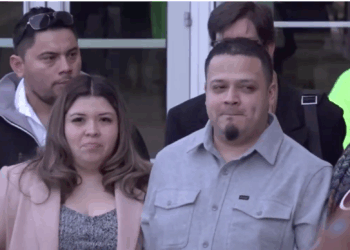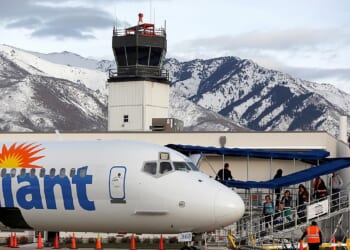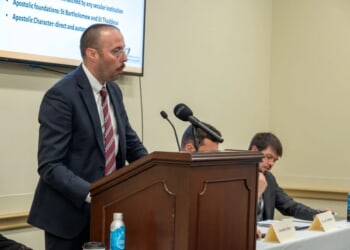If Russia stationed nuclear missiles in Venezuela, the world could find itself in a repeat of the Cuban Missile Crisis—the closest the world ever came to nuclear war.
Newly-christened “Secretary of War” Pete Hegseth has called a meeting of all 800 US military uniformed leaders for September 30 in Quantico, Virginia. The announcement provided no real details as to what the meeting was about. But the consensus is that this kind of meeting is unprecedented. Such a meeting usually implies that something significant is happening, and much speculation has occurred since the announcement as to what Hegseth could be wanting to discuss.
Some have posited that the meeting pertains to Russian military movements against NATO or the recent movements of a Russian Borei-class submarine near Japan. Meanwhile, as thousands of US Marines, a flotilla of US Navy warships and submarines, and F-35 Lightning II fight-generation stealth warplanes mass off the coast of Venezuela, an old accusation from an unnamed defense source has resurfaced.
Has Russia Put Nuclear Weapons in Venezuela?
Back in 2019, then-Representative Mario Diaz-Balart (R-FL), told Tucker Carlson on his former Fox News primetime show that the Russians had placed nuclear weapons in Venezuela. He provided no further evidence, but maintained that the Russians had moved their missiles into the socialist Caribbean country.
At the time—just as now—relations between the Maduro regime in Caracas and the Trump administration were at an all-time low. It appeared the first Trump White House was readying to support regime change against Maduro in the form of Juan Guaido’s challenge to Maduro’s leadership.
A year earlier, in 2018, the Russians had flown and landed a nuclear-capable bomber in Venezuela, but there were no reports or claims that those bombers had nuclear weapons on board. If they did, there were no credible claims that those bombers offloaded them in the South American state.
A source has insinuated that there might be concern among the Trump administration that the Russians have, in fact, stationed nuclear weapons in Venezuela. While it should be stressed there’s nothing indicating this other than an unconfirmed report, it might be time for readers to review just what might happen if, in fact, a nuclear crisis broke out in our part of the world.
The Cuban Missile Crisis, Part II
Recall that the closest the world came to a full-blown thermonuclear war was in 1962 during the Cuban Missile Crisis. At that time, the Soviet Union moved medium-range ballistic nuclear missiles into communist Cuba.
The Kennedy administration responded with a blockade, and the world nearly experienced a direct, kinetic war over the tiny island of Cuba. To the rest of the world, it was an ancillary issue. But for the United States, with the Monroe Doctrine specifically forbidding the introduction of forces from outside this hemisphere to anywhere within the Western Hemisphere—especially nuclear weapons—the challenge was an existential one.
If it was determined there were Russian nuclear weapons of any kind placed in Venezuela, there would be a period of tension, but it would be marked by attempts at deconfliction. As during the Cuban Missile Crisis, there would be a serious attempt by Washington to consult with its allies.
Sharing of declassified findings with allies would be part of the behind-the-scenes crisis response.
Envisioning a “Venezuelan Missile Crisis” Scenario
Meetings of the White House National Security Council would convene rapidly—likely involving the president, but certainly engaging the secretary of state, secretary of defense, the heads of various intelligence agencies, and the Joint Chiefs of Staff, to assess threats to the US homeland, regional stability, and other escalation risks.
The White House might issue strong condemnations, demanding the weapons be withdrawn. For example, during the 2018 movement of Russian nuclear bombers into Venezuela, the Trump administration officially protested the move.
On the other hand, to avoid anger and panic, the White House might choose to keep things as secret as possible and directly engage their allies, intelligence and military services, and the rival parties—Venezuela and Russia—on the matter. During the initial phases of the Cuban Missile Crisis, the Kennedy administration strove to keep the matter a secret—until an enterprising reporter figured out that something was up, given the use of “ORTSAC” as a military operation name. (“ORTSAC,” of course, is simply “CASTRO” spelled backward.)
Washington would likely move toward more targeted sanctions against Venezuela and Russia. Those sanctions would be directed against Russian and Venezuelan entities, such as Rosneft, PDVSA, and military officials in both countries. This could further include restricting Venezuelan oil exports to the US or allies, freezing the assets of both nations, and pressuring third countries (such as China or Cuba) not to support the deployment.
Broader economic isolation of Venezuela might accelerate such as limiting remittances or humanitarian aid channels to more completely undermine Maduro’s reliance on Russian support.
There has already been military posturing and defensive enhancements aimed at boosting the threat of the US military in the minds of Venezuelan policymakers. There may even be a replication of the US strategy toward Cuba during the Cuban Missile Crisis.
During that time, the US Navy was deployed to institute a blockade around Cuba meant to prevent any more Soviet nuclear weapons from reaching the island. In this case, the Americans might deploy their navy to pressure Venezuela into standing down on the nuclear threat by attacking suspected drug and human trafficking boats emanating from Venezuela.
America Needs a Long-Term Solution to the Venezuelan Threat
As for its long-term strategy, the US has already started reducing its dependence on Venezuelan energy sources. Several months ago, a fight erupted within the Trump administration over whether the White House should have reauthorized Chevron’s license to drill for oil in Venezuela. President Trump refused the US oil company such a reauthorization, which saves America the trouble of having to distance ourselves from Venezuela’s energy sector.
The overall aim under such conditions would be deterrence and de-escalation. At the same time, the US would need to keep the military option in its back pocket and continue signaling to Maduro—and Russia—that if anything happened with those nukes, the kind of devastation that would rain down upon Venezuela would be unlike anything seen since 1945.
One thing is clear, though: we are rapidly approaching a period in which it might be the United States, rather than Russia, that is forced to fight a foreign-backed enemy in its neighborhood.
About the Author: Brandon J. Weichert
Brandon J. Weichert is a senior national security editor at The National Interest. Recently, Weichert became the host of The National Security Hour on America Outloud News and iHeartRadio, where he discusses national security policy every Wednesday at 8pm Eastern. He is also a contributor at Popular Mechanics and has consulted regularly with various government institutions and private organizations on geopolitical issues. Weichert’s writings have appeared in multiple publications, including The Washington Times, National Review, The American Spectator, MSN, The Asia Times, and others. His books include Winning Space: How America Remains a Superpower, Biohacked: China’s Race to Control Life, and The Shadow War: Iran’s Quest for Supremacy. His newest book, A Disaster of Our Own Making: How the West Lost Ukraine is available for purchase wherever books are sold. He can be followed via Twitter @WeTheBrandon.
Image: Shutterstock / StringerAL.
















